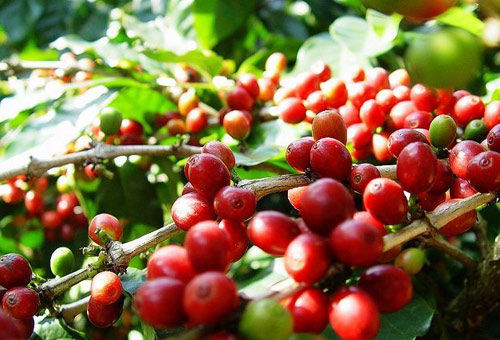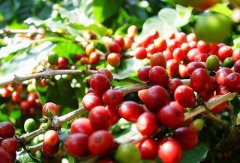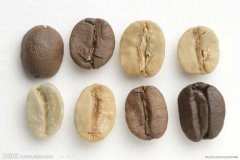Arabica coffee originated in Ethiopia, China Coffee Network charcoal roasted coffee.
Ethiopia is a coffee-producing country with many legends, numerous varieties, rich orange fragrance and many fresh things, and there is no second country in the world that can compete with it. Ethiopia's long coffee history and cultural scenery have attracted a large number of explorers, archaeologists, botanists, anthropologists and writers to Fangze. The sleeping lion of Africa suddenly awakened after the millennium and let out a roar, not only to deter Brazil from stealing natural decaf coffee trees, but also to fight Starbucks' theft of the original coffee origin names, such as "Harald", "Sidamo" and "Yega Chuefei".
Ethiopia has forcefully settled the two international disputes of "stealing trees" and "stealing names", so that the world dare not underestimate the ambition of the descendants of the Gella nationality to protect the coffee heritage. First of all, let's start with the ancient entanglement between the ancestors of mankind and Ethiopian coffee.
Whether by providence or coincidence, both humans and Arabica coffee trees originated in Ethiopia. In 1974, a group of paleontologists unearthed 4 million-year-old Australopithecus fossils in Hadar in the Afar Desert in northern Ethiopia. although they belong to apes, they are the most ancient human ancestors, and it was not until 2 million years ago that they evolved from apes to "Homo erectus." The brain capacity of the unearthed Homo habilis skull is about 700 million 800 milliliters, and it has been able to use simple tools. 1 million years ago, he evolved into "Homo erectus" (including Beijingers). With a brain capacity of 1000 milliliters, he was able to make more elaborate tools and use fire. 120000 years ago, it finally evolved into a "modern man" with a brain capacity of 1300 milliliters. Genetic studies have also found that today's humans are descendants of "modern people" who were active in the Ethiopian highlands 120000 years ago.

Important Notice :
前街咖啡 FrontStreet Coffee has moved to new addredd:
FrontStreet Coffee Address: 315,Donghua East Road,GuangZhou
Tel:020 38364473
- Prev

Young girl's smile African fruit fragrance washing treatment Ethiopian water washing Yega Xuefei YCFCU Dama
Producer: Dama cooperative flavor: lemon peel, black tea, dried longan, flower-scented Esopia, there are mainly eight major producing areas: Ekempti, Limu, Illubabor, Djimma, Harrar, Teppi/Bebeka, Sidamo, Yirgacheffe. Yirgacheffe is located in the Gedeo region of southern Ethiopia, which is well-known for its jurisdiction.
- Next

The god of poetry, Lambo, abandoned the article to do coffee business in Egypt, boutique coffee beans, Ethiopian flavor.
Ethiopia is mainly a wild coffee forest, want to chew coffee fruit or drink coffee, go into the forest to pick, so there was no coffee cultivation in ancient Ethiopia. Yemen had a large-scale coffee cultivation industry and coffee trade with Europe as early as the 15th and 16th centuries, and Ethiopia did not have a record of coffee trade until the 19th century. In 1838, Ethiopia passed through the port of the Red Sea
Related
- Does Rose Summer choose Blue, Green or Red? Detailed explanation of Rose Summer Coffee plots and Classification in Panamanian Jade Manor
- What is the difference between the origin, producing area, processing plant, cooperative and manor of coffee beans?
- How fine does the espresso powder fit? how to grind the espresso?
- Sca coffee roasting degree color card coffee roasting degree 8 roasting color values what do you mean?
- The practice of lattes: how to make lattes at home
- Introduction to Indonesian Fine Coffee beans-- Java Coffee producing area of Indonesian Arabica Coffee
- How much will the flavor of light and medium roasted rose summer be expressed? What baking level is rose summer suitable for?
- Introduction to the characteristics of washing, sun-drying or wet-planing coffee commonly used in Mantenin, Indonesia
- Price characteristics of Arabica Coffee Bean Starbucks introduction to Manning Coffee Bean Taste producing area Variety Manor
- What is the authentic Yega flavor? What are the flavor characteristics of the really excellent Yejasuffi coffee beans?

